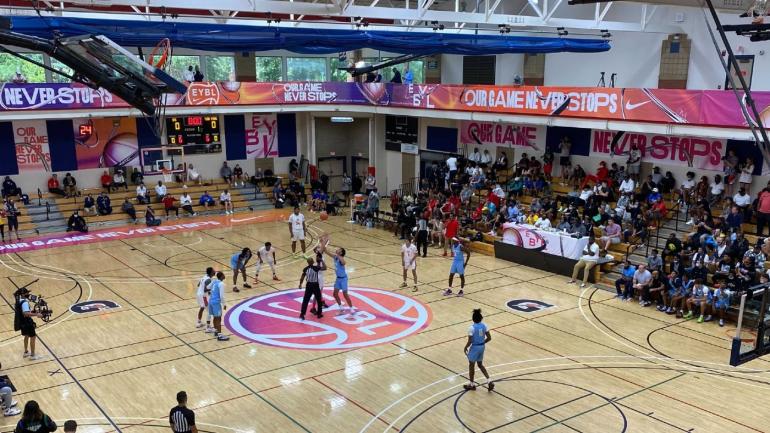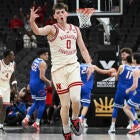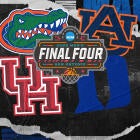
NORTH AUGUSTA, S.C. -- There they all were, the biggest names in college basketball, lining the courts here inside the Riverview Park Activities Center for the first time in two years to watch most of the nation's best high school prospects compete on the Nike EYBL circuit. Jim Boeheim and Bill Self to my right, Frank Martin and Juwan Howard to my left. Nearly every prominent coach and assistant was in attendance at some point over the weekend, each trying to figure out exactly how much he needs to adjust his recruiting approach given how much the world of college athletics has been altered in recent months.
"The game's changed, man," said Texas coach Chris Beard.
Boy, has it ever.
Emoni Bates, Bronny James, Jalen Duren and much more: Parrish and Norlander recap their Nike EYBL trip on the latest episode of Eye on College Basketball.
Players, as you likely know, can now transfer once without penalty, which has directly led to a record number of student-athletes in the transfer portal this offseason. Some are transferring up in search of a bigger stage. Some are transferring down in search of a bigger role. The amount of movement is unprecedented -- and the byproduct was a building full of coaches evaluating prep prospects thoroughly this past weekend while asking themselves a simple question: How many of these guys do I actually want?
"I'm supportive of the one-time transfer thing, fully," said Pitt coach Jeff Capel. "But I think the people that it'll hurt the most are high school kids."
Auburn coach Bruce Pearl expanded on that thought.
"We're going to end up probably taking half as many high school prospects as we would've taken before," he said. "Over a period of four years, in the past, we might've taken three or four high school players a year on average. Now it's going to be one or two."
That's a sentiment I heard from countless coaches over the weekend -- their point being that it'll rarely be sensible going forward to sign high school prospects early who don't figure to play for you as freshmen because A) you can probably find somebody better in the transfer portal, and B) now that players are allowed to transfer without sitting out a season, there's a decent chance you'll spend a year developing a limited-role freshman only to lose him after that year to a school that offers more playing time.
"I actually told my staff that I think we have to look at this differently because it's a different time," Capel said. "With this transfer portal, if a kid can't come in and have an impact [immediately], and if he's not realistic in understanding that, then you're setting yourself, and him, up for a transfer."
The word "transparency" came up over and over again when coaches were discussing an adjusted approach to pursuing high school prospects. They said they'll have to ask more questions than ever, have to be more honest than ever, have to make sure prospects who project as out-of-the-rotation players for their programs early understand they project as out-of-the-rotation players for their programs early, and that if they're uncomfortable with that, perhaps it would be best for everybody involved to move on because if a coach knows a player won't play much early, and if that player knows he won't be happy if he doesn't play much early, it's just a marriage destined for divorce.
"We're going to check more boxes than ever before, do more research than ever," said Davidson coach Bob McKillop. "The transparency that the players have, and that we have, will determine where we go."
Pearl echoed that sentiment.
"If you recruit the 188th-ranked prospect, you now have to make sure he knows he's the 188th-best prospect, and you have to tell him that he's probably not going to play a lot early in his career because you've got this guy and this guy and this guy," Pearl said. "Kids want the truth. If you tell them the truth up front, they're less apt to leave you. So you have to be transparent with them."
Bottom line, the days of high-major programs signing six high school prospects in a class -- some who can help immediately, others who probably won't -- might really be over because, in this new world, players who aren't playing will often have one foot in the transfer portal by the end of December, and coaches know it because they just lived it. So the new approach for many is to mostly forget about two-year plans and three-year plans and just build the best roster you can build each year with almost nothing but players who can and will play immediately -- even if that means not using all of your available scholarships.
Like Beard said, the game's changed.
Reasonable minds can disagree on whether it's for the better or for the worse. But there's no denying the game has indeed changed, and the coaching staffs that adapt best will be the ones who flourish most.
![[object Object] Logo](https://sportshub.cbsistatic.com/i/2020/04/22/e9ceb731-8b3f-4c60-98fe-090ab66a2997/screen-shot-2020-04-22-at-11-04-56-am.png)


















